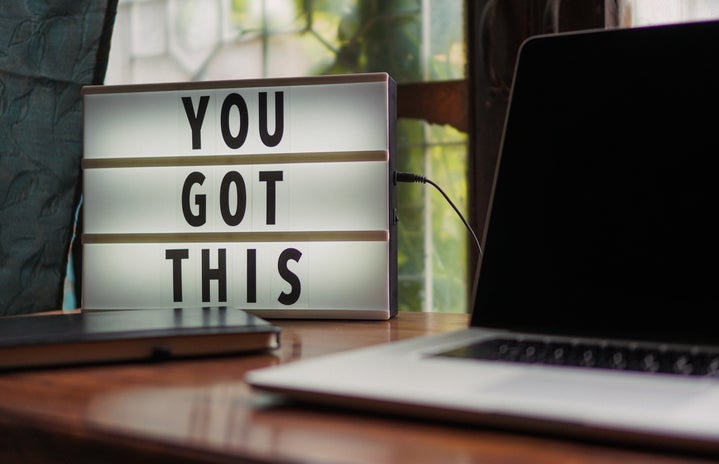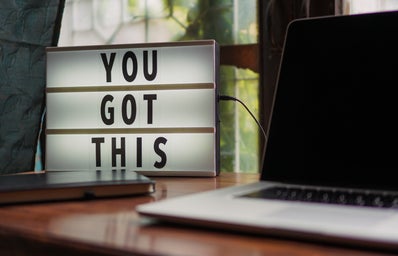As summative season looms over our heads, you may have questions about how to study efficiently, optimise your productivity, and feel (somewhat) relaxed in the midst of work piling up. With Covid still prevalent in our lives, studying/working in our rooms is the new norm. So how can we maximise the space in our room to most effectively get work done? Dan Ariely, Professor of Psychology and Behavioral Economics at Duke University, says that the environment we make for ourselves hugely influences our behaviour. I’d say he goes a bit far when he suggests “it’s about deciding not to have doughnuts on the desk”, but he does have some good pointers. This article will share some advice on how to create a relaxing study/work space in your room, how to make to-do lists that are actually effective, and how to concentrate on the task at hand, with or without doughnuts.
Flowers: Happiness Guaranteed!
For a little pick-me-up, why not get some fresh flowers to display on your desk while studying or working? With a myriad of options to choose from in your local grocery store, a £3 bouquet is a reasonably affordable luxury that can irresistibly brighten your whole day. In fact, flowers are scientifically proven to be mood boosters! One study led by Harvard Clinical Researcher Nancy Etcoff found that women who received flower bouquets experienced reduced stress levels and increased positive energy. The Society of American Florists, one of the research sponsors, attests that the act of receiving flowers gives “instant satisfaction and delight”. Not bad! Etcoff further adds that the presence of fresh blooms when working brings about relaxation and compassion, which could definitely be handy when receiving your sixth email of the day kindly informing you of another essay deadline.
Scented Candles: Just What the Doctor Ordered.
This is also the perfect time to light your scented candles and create a more conducive environment for a successful study/work session. Mark Moss, Head of the Psychology Department at Northumbria University, says that aromas can actually help us focus and relax by interacting with our brain chemistry. Citrus candles, for example, can help curb stress and anxiety – a Japanese study conducted on 12 depressive subjects found that citrus fragrance “normalized neuroendocrine hormone levels and immune function”. That sounds good, right? Another Northumbria University study affirmed that lemon balm ameliorated the feeling of negativity and enhanced the feeling of calmness. So not only will you be doing those dreaded assignments in a citrusy haven, you will be feeling calmer while you do.
The Do’s for your To-do List.
After getting yourself in the perfect study ambiance, it’s time to sit down and make a to-do list for the session. Sounds pretty easy right? In actual fact, studies show that the concept of to-do lists can often fall dangerously close to to-not-do lists. Laura Vanderkam, author of 168 Hours: You Have More Time Than You Think, says that our lists can easily transform into “a daily failure list”, since most of us end up setting too many tasks that leave us more overwhelmed. Julie Morgenstern, author of Time Management From the Inside Out, shares some tips to on how to escape to-do list traps:
- Remember, keep the list short and simple – don’t try and do a weekly shop, write an essay, and conduct comprehensive primary research in that fifteen minutes between your lecture and dance class…
- Put time estimates on each task – and be realistic!
- Dissect big tasks into measurable pieces.
- Spend 15 minutes at the end of the day to review what tasks you’ve finished, and plan for tomorrow’s goals. It’s way less daunting waking up to a new day when you have something of a plan.
Now that you’ve learnt Morgenstern’s tips, will you create your list by paper or digitally? Some students like the old-school method of writing their to-do lists on paper. Morgenstern confirms that this method “emblazons” tasks and provides positive reinforcement with visual and tactile rewards. Other students prefer digital to-do lists. If you choose to go digital, these apps do the job perfectly: Todoist, Remember the Milk and Evernote. While all three apps have reminders via notifications and sync across all devices, Evernote has the additional feature that allows you to add PDFs, sketches, audio and more to your to-do list; pretty nifty!
Flora: the Pomodoro Technique?
Following the above to-do list making techniques, you now have to do the actual tasks. We all tend to fall victim to procrastination and distractions while working, because often, doing the actual work feels like the hard part. Well don’t you fret, there is an accessible solution. Flora is a productivity app that lets you set Pomodoro sessions and breaks. The Pomodoro Technique, developed by Francesco Cirillo in the early 1990s, is a time management method that separates work into 25 minute intervals, followed by short breaks in between. The breaks not only give your brain and eyes an occasional rest, you are also guaranteed to work more efficiently and holistically! The app utilises positive and negative reinforcement as well: a plant will grow every time you complete a Pomodoro session uninterrupted, but said plant will die if you give into the temptation and browse other apps. If the incentive of a virtual garden filled with adorable animated plants is not enough, Flora also has a to-do list feature and a multi-user function for you and your friends to get motivated and plant trees together.
We hope these techniques help you out over the coming term. A friendly reminder that with the ongoing pandemic, a lot of us are a bit off course, and that’s okay! Please don’t be too harsh on yourself, and treat your mind and your body well by remaining relaxed while getting that work done.

